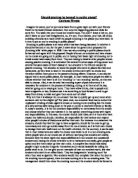Write the rate laws for the following elementary reactions.
The rate law for an elementary step is derived from the molecularity of that step. Write rate laws for elementary reactions, explaining how the order of the reaction relates to the reaction rate. Elementary reactions sum to the overall reaction equation. Rate laws for elementary steps are derived from the molecularity of each step.
An elementary reaction is a single step reaction with a single transition state and no intermediates. Elementary reactions add up to complex reactions; non-elementary reactions can be described by multiple elementary reaction steps. A set of elementary reactions comprises a reaction mechanism, which predicts the elementary steps involved in a.

Interpretation: The rate law of the given elementary reactions is to be determined. Concept introduction: The change observed in the concentration of a reactant or a product per unit time is known as the rate of the particular reaction. The differential rate law provides the rate of a reaction at.

Reaction Mechanism - Elementary Process. A mechanism for a reaction is a collection of elementary processes (also called elementary steps or elementary reactions) that explains how the overall reaction proceeds. A mechanism is a proposal from which you can work out a rate law that agrees with the observed rate laws.

The rate of a reaction depends upon the concentration of the reacting molecules. It is necessary for the reacting molecules to have sufficient energy.

The above sequence of elementary steps is referred to as the mechanism of the reaction. The slow step (ii) is called rate determining step. Rate determining step: The elementary reaction with slowest rate is called rate determining step or rate limiting step. The rate of overall reaction depends on this step. It is also the step with highest.

How to Write a Rate Law in Chemistry. Most reactions, summarized on paper as a single step, are actually the sum of multiple steps. The reaction rate depends on the slowest of these intermediate steps, or the rate-determining step. Writing a Rate Law. Find the rate-determining step. Typically, if you are given rate data for an overall reaction, the data includes an indication of which.

Gas Phase Multiple Reactions in a Catalytic Packed Bed Membrane Reactor with Pressure Drop. Mole Balances. We also need to account for the molar rate desired product C leaving in the sweep gas F Csg. Rate Laws. Net rates, rate laws and relative rates same as Liquid and Gas Phase PFR and Liquid Phase CSTR. Transport Law.

An elementary reaction is a chemical reaction in which one or more chemical species react directly to form products in a single reaction step and with a single transition state. In practice, a reaction is assumed to be elementary if no reaction intermediates have been detected or need to be postulated to describe the reaction on a molecular scale.

Key Points. Elementary reactions sum to the overall reaction equation. Rate laws for elementary steps are derived from the molecularity of each step.; Reaction mechanisms can agree with experimental data, but can never be proven for certain.

To gain an understanding of rate laws and determine rate laws from initial rates. To gain an understanding of and the ability to determine reaction orders (including units). The mathematical relationship of reaction rate with reactant concentrations is known as the rate law. This relationship may rely more heavily on the concentration of one.

Rate Law for Reversible Reactions Example: Write the rate law for the elementary reaction Here k fA and k rA are the forward and reverse specific reaction rates both defined with respect to A. (1) (2) At equilibrium The equilibrium constant decreases as T increases (exothermic rxns) K e increases as T increases (endothermic rxns).

How to write rate laws for unimolecular and bimolecular elementary reactions.



